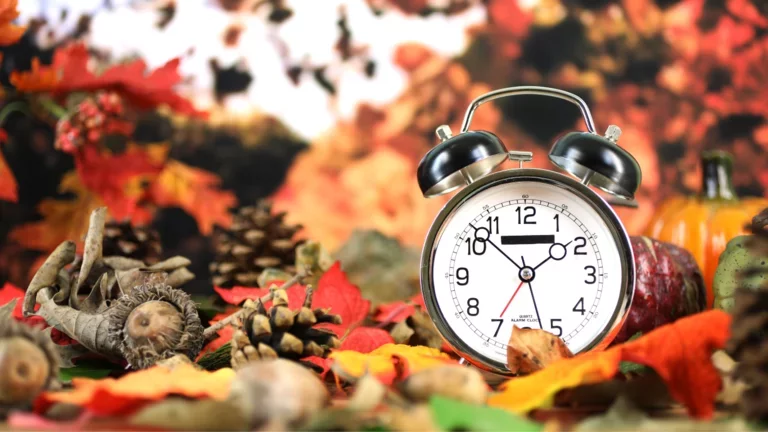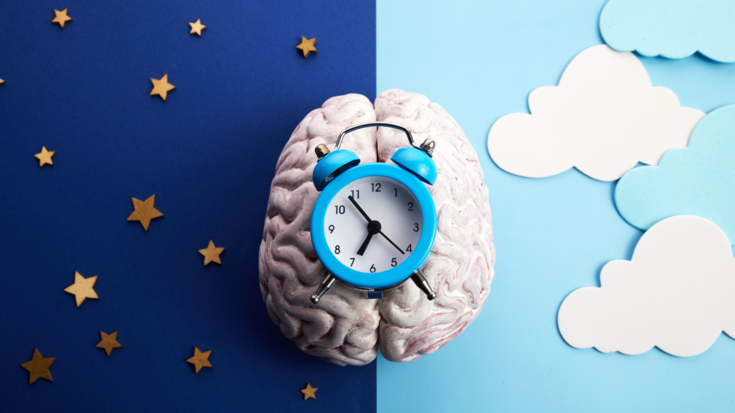Prepare to set your clock back for Daylight Savings Time.
Published on November 04, 2022
6 minutes

Daylight Savings is an annual occurrence of moving the clocks forward by an hour. It occurs between the months of March and November in preparation for shorter and darker days over late fall and winter. The purpose of Daylight Savings Time (DST) is to save natural light. This year daylight savings time in Canada began at 2:00 am ET on Sunday, March 13, 2022 and will end at 2:00 am ET on Sunday, November 6th.
George Hudson, a 19th Century entomologist (insect biology specialist) from New Zealand first proposed modern DST to help him manage his time during his shift-work job at the Post Office. He enjoyed collecting insects during his leisure time. Introducing DST allowed him to collect insects in the evening, while also better utilizing the early-morning daylight. The idea was adopted by several countries to make outdoor activities such as gardening, cycling, cricket and others easier to plan with daylight.
Have you noticed a change in your sleep routine when seasons change?
Between the months of November and March, we all operate on standard time. Time changes, even by an hour over spring and fall can disrupt your sleep routines. If you have obstructive sleep apnea (OSA) and/or other sleep disorders then the effect can be more severe with poor quality sleep, or loss of sleep altogether. Poor quality of sleep resulting from time change can affect your productivity, reasoning and ability to make decisions.
It is also common to notice changes in mood in the fall and winter months due to the reduced hours of daylight that affects your melatonin levels. Melatonin is a hormone that regulates your circadian rhythm or sleep/wake cycle. Exposure to light late at night can affect production of melatonin, which can affect your quality of sleep. The disruption to your internal clock can affect many bodily functions, so it is important to prepare for the time change. Here are some tips to get you prepared for DST.
How can you prepare for the clocks going back?
The clocks moving back during fall and winter is an annual occurrence, so take time to prepare yourself. Making a plan can help you keep your health in check, but also help you maintain a good sleep routine in the long run.
If you practice good sleep hygiene, it would be easier to adjust to the time change. Healthy habits and a sleep-friendly environment are essential to feel refreshed and well-rested. The most important facets to maintaining a healthy sleep routine are:
- Spend 7 to 9 hours a night sleeping.
- Keep a regular sleep pattern during the week and on the weekends.
- Restrict alcohol and caffeine at least 2 hours before bed.
- Restrict technology use at least 1 hour before bed.
- Use a sleep mask and/or ear plugs to block off unwanted noise and light, or both.
- Select a sturdy mattress and cozy bedding to ensure a comfortable sleep environment.
- Unwind before bed by using relaxation techniques.
Daylight Savings Time is only observed by 21% of the world’s population as sunrise and sunset times do not vary significantly to justify the time change in many regions. Asia and Africa don’t observe Daylight Savings, particularly those regions closer to the equator.
Slowly adjust your sleep for the time change
The best way to prepare for the time change is to slowly adjust your sleep schedule over the nights leading up to the time change. Try to get to bed earlier by 15 to 20 minutes each day. If you can also plan to have your meals and adjust your wellness routines by slowly moving them forward it can help you get acclimated over the week.
It's more likely that you will experience severe negative effects from the time shift if you are already sleep deprived before the start of daylight saving time. So, try to get more sleep ahead of the DST adjustment by creating a ‘sleep bank’, which is a time of uninterrupted sleep before brief intervals of less sleep. Studies have shown that building a sleep reserve can preserve motor function, reduce cognitive decline, and help limit daytime sleepiness.
The night before the time change, make sure your watches and any clocks in your home have been set to the new time. Although many of your electronic devices may automatically update with daylight savings time overnight, just double check they are connected to wifi and set to automatically update. This may help ensure that you don’t have your morning alarms going off earlier or later than you expected. It would also help you prevent any unexpected occurrences the next morning.
Lack of preparation prior to the time change for sleep apnea patients can exacerbate the symptoms. Poor sleep can increase daytime sleepiness, abrupt nighttime awakening, headaches in the morning, mood alterations and much more! If you are experiencing these symptoms, contact us to learn more about sleep apnea diagnosis and treatment. If you are already using a CPAP device for OSA treatment, our clinicians can support you along your therapy journey.
Exposure to daylight is important for your body’s internal clock
The strongest influence on our bodies' internal clocks (circadian rhythm) comes from natural light, which is more effective than artificial indoor lighting, even on gloomy days, in bringing the circadian rhythm into balance.
Finding time for sunlight exposure in the days after the shift to DST might assist your body's internal clock adjust to the new schedule of light and dark. Plan to spend time outdoors, preferably in the morning, and get some daylight exposure on the Sunday after the shift in time zone to lessen sleep interruptions. If you find it challenging to go outside due to the cold, then bring natural light into your home by opening curtains and sitting near your windows.
How to deal with daytime sleepiness during the time change?
A quick nap could be helpful if you struggle with extreme daytime drowsiness in the days after the change to daylight saving time. Your attentiveness will increase and your morning grogginess will decrease if your snooze lasts no longer than 30 minutes.
The optimal time to take a nap is in the early afternoon, when most people's alertness declines. Late afternoon or evening naps should be avoided since they might make it more difficult to fall asleep at night, furthering the disruption of your sleep routine.
In case you experience daytime tiredness on the Sunday or Monday following the time change, try to avoid packing too much into your agenda. If possible, try to plan important events and meetings for later in the week so you can have enough time to adjust to the time change. Due to the potential risks of sleepy driving, it is also recommended to avoid taking long drives shortly after the DST adjustment.
Our VitalAire clinicians will be pleased to speak with you, if you would like more information on boosting your sleep health and routines.
VitalAire will help you throughout your sleep health journey, with a personalized one-on-one approach to improve your sleep, health and well-being.
References:
https://www.sleepfoundation.org/circadian-rhythm/how-to-prepare-for-daylight-saving-time
https://www.sleepfoundation.org/circadian-rhythm/daylight-saving-time
https://www.sleepfoundation.org/circadian-rhythm
https://www.timeanddate.com/time/change/canada
https://www.nccih.nih.gov/health/melatonin-what-you-need-to-know




